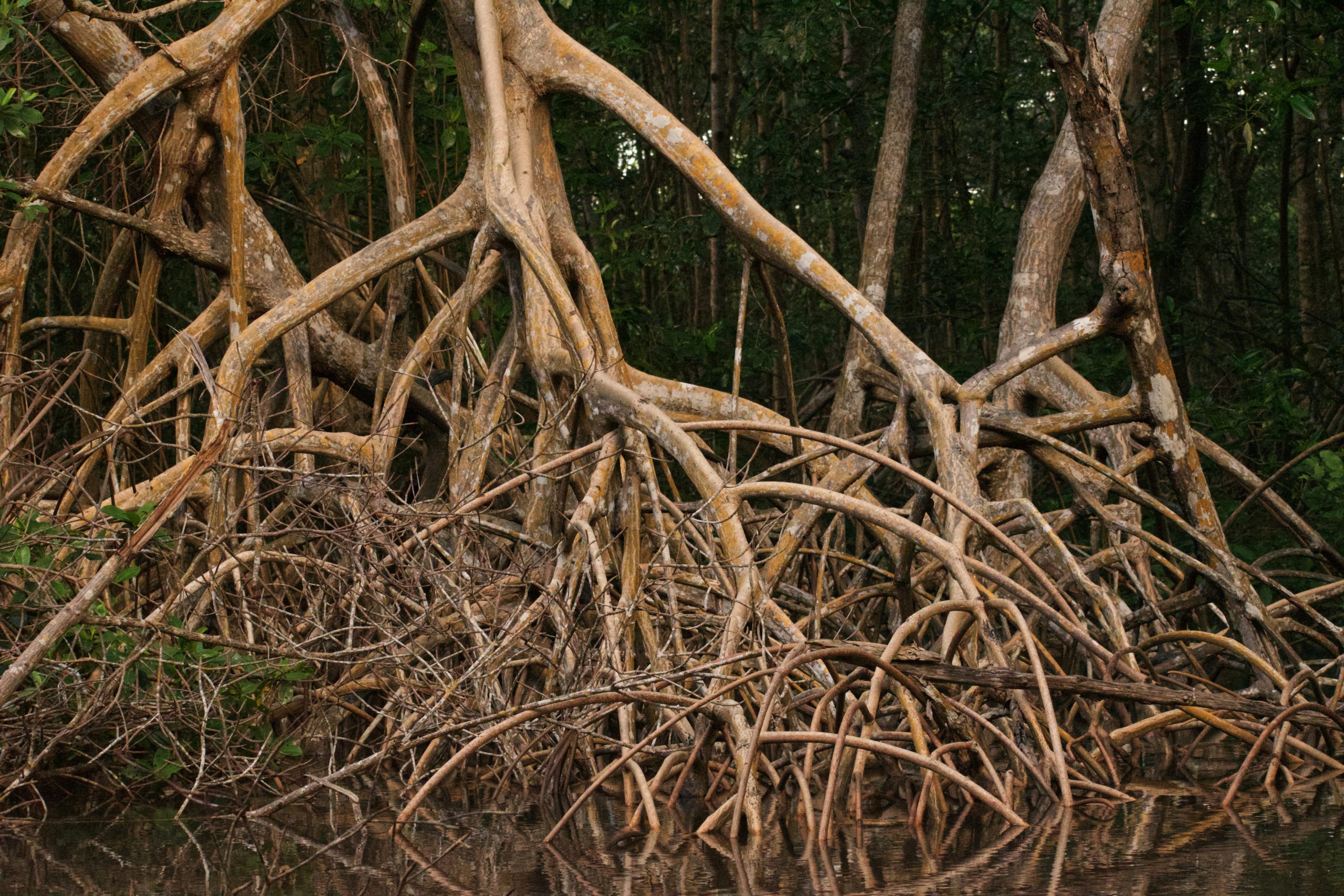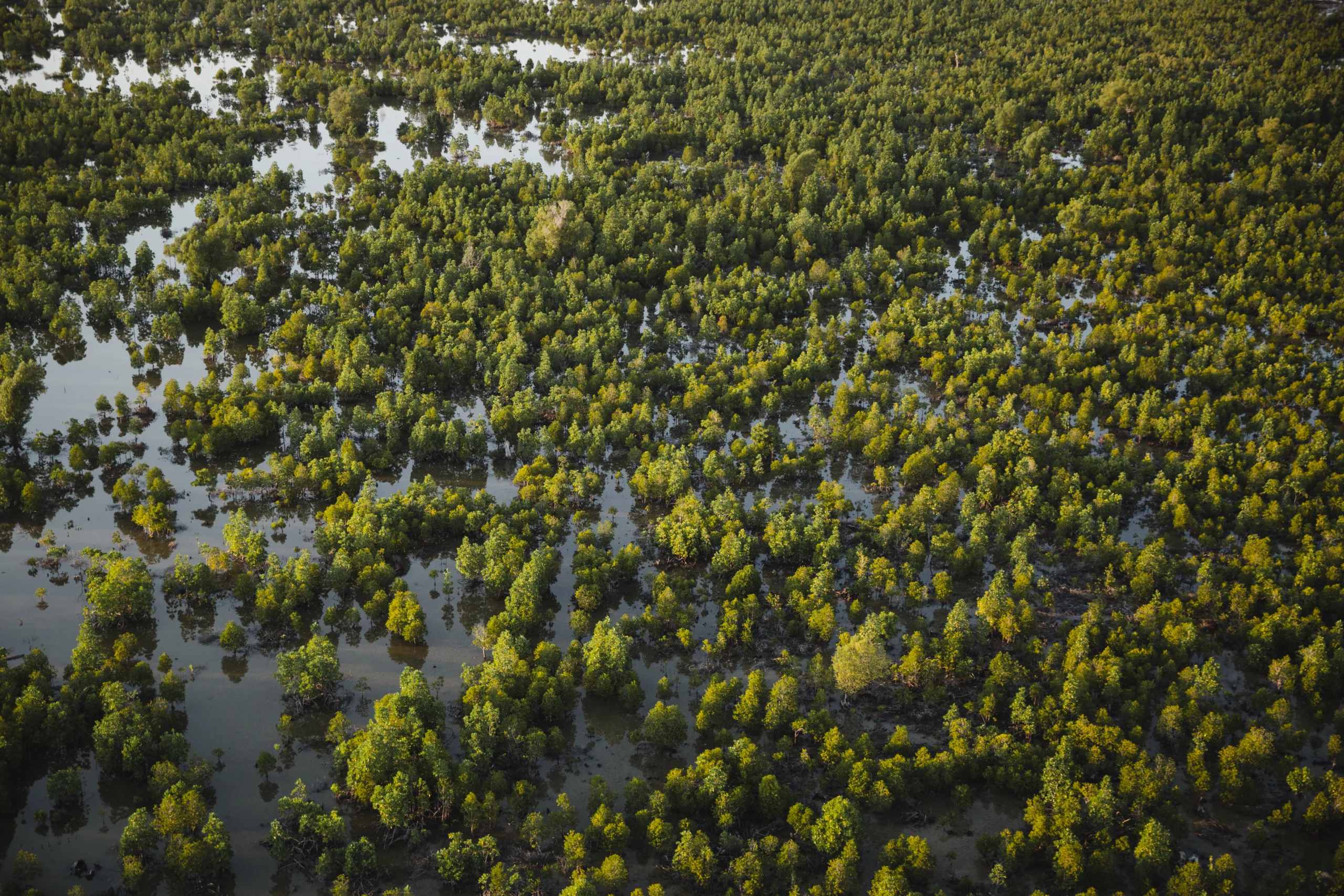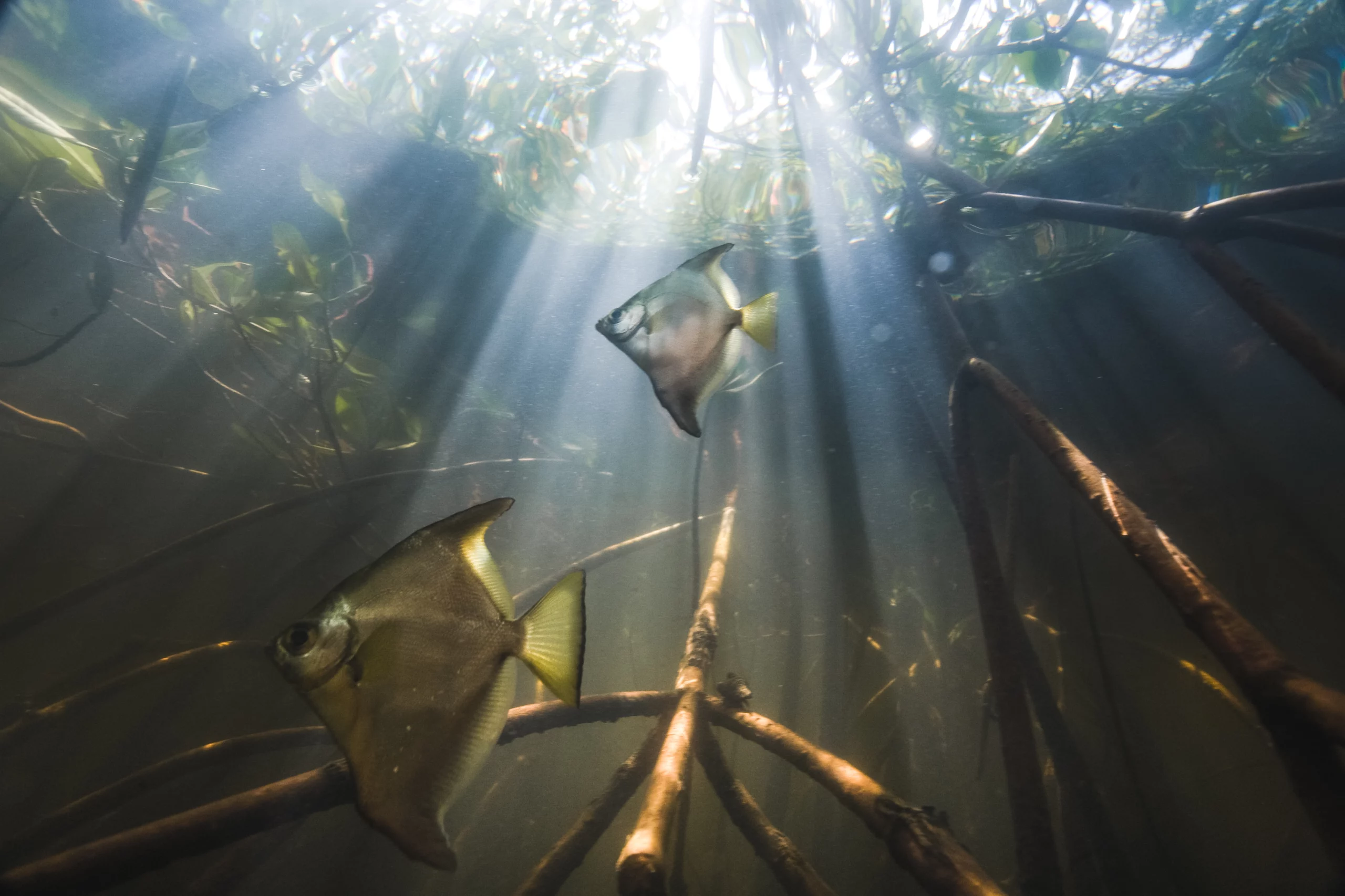Diving beneath the waves, we’re excited to expand our tree-planting mission to protect our planet’s oceans. From planting to kelp to restoring coral reefs, we’re taking on reforesting the sea, and our mangrove planting projects are an important part of this new chapter.
Growing at the intersection of sea and shore, we’ve planted almost 50 million mangrove trees to date. As we work to reforest our oceans, we’re launching new mangrove planting projects to restore the marine ecosystems they support. These projects help…
- Protect biodiversity by restoring critical coastal habitats
- Protect coastal communities against storm surges and erosion
- Improve livelihoods and break cycles of poverty
- Sequester large amounts of carbon
Learn more about these unique trees and the benefits they create for the ecosystems and communities that depend on them.
Mangrove trees can live in saltwater
Mangroves are short bushy trees that grow in coastal areas and inter-tidal zones between the shore and the sea. They are the only tree in the world that can grow in salt water, making them a unique and invaluable part of the world’s ecosystems.

Every high tide brings saltwater that submerges the stilt roots of mangroves. These roots are necessary for the trees to breathe, especially when growing in anaerobic sediment (sediment composed of organic material and not exposed to oxygen).
Even more remarkably, mangroves can use their roots to desalinate the water they consume, removing up to 99% of the salt content and excreting it through their leaves. This incredible adaptation makes mangroves ideally suited to thrive in the salty waters along coastlines.
Mangroves create natural storm barriers
Guardians of the coastline, mangrove trees create a natural buffer between land and sea. Their tangled root systems trap sediment, stabilizing the shoreline and preventing erosions.

Mangroves also protect shorelines from storms and hurricanes by reducing the damage from waves and wind. Estimates show that mangroves can absorb 70-90 percent of the energy from regular waves. This natural protection is crucial for shoreline communities as weather patterns become more intense due to climate change.
Mangroves store more carbon per unit area than any other ecosystem
Their unique environment makes mangrove trees one of the best in the world for sequestering carbon dioxide. Mangrove forests can store up to four times more carbon than tropical rainforests.
With each high tide, the roots of the mangrove are completely submerged in saltwater. This submersion prevents oxygen from entering the soil, creating anaerobic sediment. Without oxygen, organic matter (carbon) decomposes very slowly, which means large amounts can accumulate. This thick carbon-rich soil is one of the best carbon sinks in the world.

Mangrove trees can also grow in a variety of soil types. Many species prefer mud but can also grow in coral rock, peat, and sand.
Mangrove trees create important habitats
Thousands of fish species rely on mangroves for their habitat. Villagers who live near coastlines depend on these forests for fishing, and they also provide breeding grounds for shrimp, crabs, and shellfish, as well as nesting spots for monkeys, fishing cats, lizards, sea turtles, and crocodiles.

Just as trees benefit the habitat, these animals do as well. For example, mangrove crabs actively take fallen leaves into their caves within the mangrove roots. This mulch is quickly colonized by bacteria and consumed by other creatures in the area, releasing the nutrients back into the habitat and helping the mangroves grow.
Mangroves are found all over the world
There are approximately 80 species of mangrove trees found in 52 countries. They grow in coastal areas of the Caribbean, Central America, South America, Africa, Asia, Oceania, and even parts of the United States, such as Florida, Texas, and Hawaii. Indonesia is home to the biggest and most varied mangrove ecosystems on the planet.
Keep Reading
Ten Steps to Planting Mangroves in Madagascar
By planting trees for every item you purchase, it’s our mission to plant 1 billion trees by 2030. Head to our website to learn more and begin your planting journey with 10% off.

